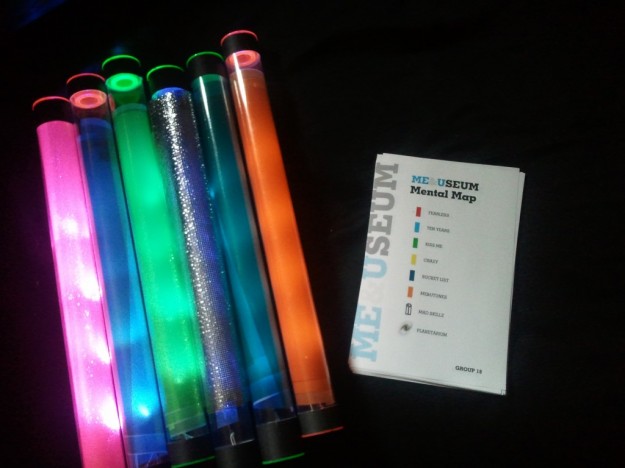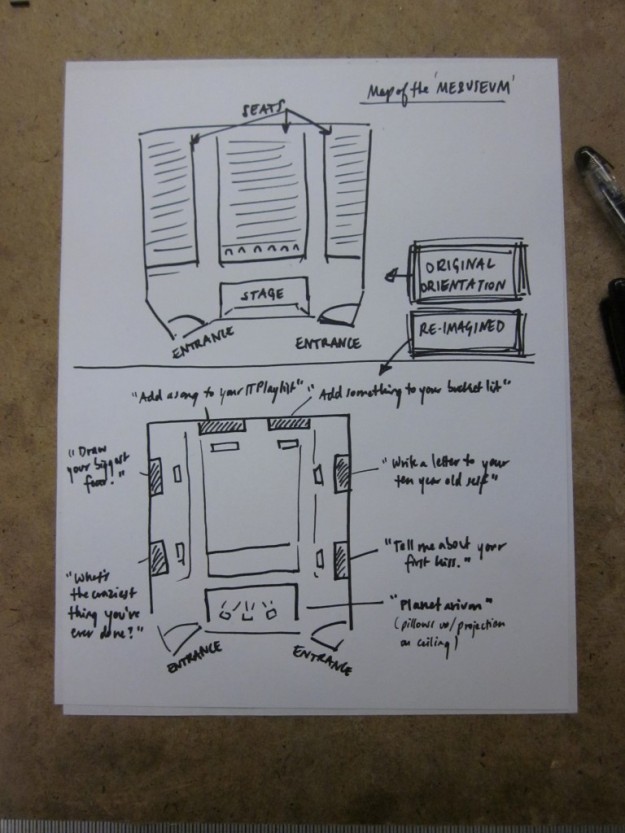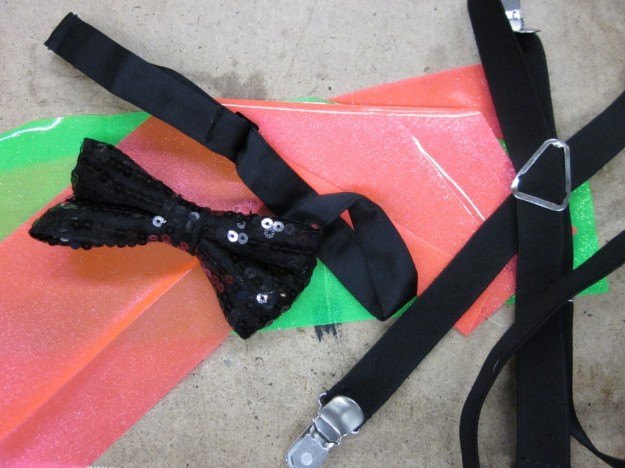Applications is a class lead by Red Burns, the founder of the ITP at NYU, and is my favorite class so far. Every week, a different guest lecturer is invited to talk to us about their work, their ideas, their aspirations, their history, and their advice on life. Presenters come from varying industries and field, almost as varied as the ITP student body itself. Some presenters are ITP alumni themselves.
Every week, two groups from our class present their response to the speaker of the previous week. My group, group 18, was responding to Curtis Wong, a Principle Researcher for Microsoft, who shared his passion for virtual environments and visualization. He is the creator of The Worldwide Telescope (WWT) which was announced at the TED Conference in 2008. He called it his labor of love.
WWT is a 3D virtual space in which users can navigate through the Universe, visiting stars, planets, galaxies, and more. The application pulls data from various astronomy sources, everything from location, shape, color, history, temperature. That data is then visualized spatially with layers upon layers in depth. As Curtis took us through the tour, we couldn’t contain our oohs and ahhs. It was mind blowing.
My group, Mick Hondlik, Sheiva Rezvani, Matt London, Hiye Shin and I, had a week to put together a presentation on our collective reaction as a group. Some of the themes we talked about were:
– exploration and discovery
– personal narratives and storytelling
– layering of data to give richer stories
– how do people navigate through virtual space
– being given the tools to create your own narrative and sharing it with others
– how learning happens when content is made personal somehow
As a group, we decided to build our presentation around on the follow reaction:
Personal narratives and immersive environments create memorable experiences.
And thus, the ME&Useum was born.
Personal interaction and narratives
The ME&Useum is museum about our class. We transformed our usual lecture space, which is in effect a theater, into an open space to be roamed around at everyone’s leisure. Before even entering the floor of the space, we had everyone line up downstairs. Matt, Mick, and Sheiva took turns bringing groups of about 10 people at a time and leading them upstairs. As they walked with their group, they introduced themselves and explained the setup. Everyone was given a map key for the different exhibits and a glow stick since the room was dark.
Once the group got to the front doors, they would meet with either Hiye or myself. We introduced ourselves and lead them to the coat check area of the room before letting them roam the space on their own.
We made our introductions this way to make the experience more personal. A group of 10 was small enough for us to get everyone in quickly and still be able to personally address each person.
Inside the museum were six exhibits. The exhibits were where our classmates could learn more about each other and share their personal experiences. The six exhibits were:
– Write a letter to your 10-year-old self
– Draw your biggest fear
– Tell us about your first kiss
– What’s the craziest thing you’ve ever done
– What’s on your bucket list
– Add a song to the ITP playlist
At each exhibit, there were note cards filled with personal narratives from our group, and blank cards and markers for people to add their own stories.
Immersive environment
Creating an immersive environment was important for this project. In order to make this memorable, we needed people to feel like they were entering a new space. By changing how they entered the space and personally escorting them into the room, we already planted the expectation that this was going to be different. We originally talked about having coat check outside of the room which would make the entrance even more dramatic. However, logistically it was just simpler to guide people to a space inside the room.
In addition to the introduction to the space, we created a more immersive environment by dimming the lights to near darkness and having people navigate through the light of their glow sticks. The stations were clearly marked with lit color marks that matched the map key.
We were also in costume the entire time and played some background music to set the mood.
Levels of engagement and disengagement
Because we were transforming how people experienced the space, as well as asking people to participate, we wanted to make sure we didn’t overwhelm anyone. We were asking them to share personal stories which could be anonymous if they wanted. If people didn’t want to share they could simply read what our group had shared and what other people were submitting.
To take the level of disengagement even further, we had an area of the museum that we called The Planetarium. At the front of the room, on the stage, we laid out pillows and blankets for people to lay and relax. From there, if you look up we had projected an animation that made it look like you were flying through Space, but in between the stars flying at you were cutouts of all of the current students’ head with their name. It was a silly way to help everyone to get one another’s name. Yet it didn’t take any effort on the part of the participant. They could just relax.
We understood that different people are interested in different levels of engagement, or they could simply be tired and not in the mood to walk around. We didn’t want to create any pressure. We wanted everyone to do what they wanted but have tools to participate if they so chose. All of these options were explained to them in the introductions.
Surprise and Discovery
In our discussions about Curtis Wong’s presentation, we talked a lot about discovery as part of the memorable experience. The term “discovery” didn’t make it into our formal reaction, but it was a significant part of it nonetheless.
In our map handouts there was item called Mad Skillz that wasn’t marked like the other items. This part of the exhibit was actually a photo booth placed outside of the room. A few people found it and got to take their picture displaying a skill that they had on a dry erase board.
Another bit of surprise that we planted were hand written love letters to each of our classmates. Each letter was written by one person in our group and Hiye and I placed them one on top of everyone’s bag as they were exploring the space. It was meant to be small personal gift from our group.
Group Collaboration
This project was a huge undertaking for us to pull off in a week. I feel truly lucky to have been placed in a group that was dedicated to making this happen. We met every day and stayed stayed late some nights, much later than any of us really wanted, but we all were so really excited to see this through to fruition.
We were fortunate enough be able to build on each others ideas for first few days then we were able to scale down to what was realistic and cutout parts that didn’t support our core reaction.
Memorable experience
Seeing people’s faces as they were first entering the space was priceless. As I was in the middle of my introduction, they were barely listening to what I saying and trying to peer over my shoulder into the room. We had built up all this anticipation as they waited downstairs with their maps and glowsticks and then through the introductions coming up the stairs.
Overall we got a pretty good response from our classmates and from Red Burns. Red complimented us on transforming the room and said that Curtis would have loved it too. The biggest compliment we got, in my opinion, is when a classmate said they like that we had created a “safe space” for everyone to share and participate as much or as little as they wanted. This was big for me because I know myself and I know that I’m not always the first person to volunteer my participation or personal information. While that is something I’m always working on personally (being able to just jump in and speak or take risks), I knew there were others like me who might hesitate at first. Everything in our presentation was optional, even their attention. Each person’s experience in the space was personal.
I had such an amazing time working on this project. We worked really hard on this. And it’s by far my favorite experience at ITP so far.


